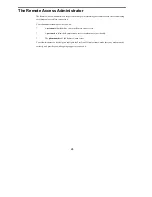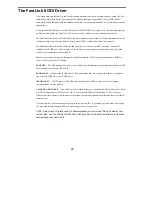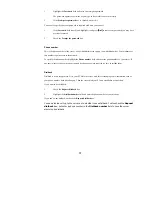
34
Duplicate IPX Addresses
Your Remote Annex server does not let two users with the same IPX address connect simultaneously. If
someone else with your IPX address has already dialed in, you will get an error when you try to connect.
If you use FastLink II’s node address that was generated at installation, the odds of this happening are very
small. If it does happen to you, go to the Setup Dialog and generate a new random node address to resolve the
conflict.
Your node address is saved in FastLink II’s configuration file, FLINK.INI. The most likely way for two people
to get the same node address is by copying FLINK.INI. This might be done as a shortcut to configuring several
similar machines. If you think your FLINK.INI may be a copy of someone else’s, just regenerate a new node
address to be sure of avoiding conflicts.
Broadcast Filtering
The Broadcast Filtering settings let you suppress various types of broadcast packets from the network to reduce
unnecessary traffic.
A broadcast packet is one which is not directed to one particular node, but to every node on a network. Networks
are normally buzzing with broadcast traffic. File servers and other network services advertise their presence
using broadcasts, routers keep each other up-to-date using broadcasts, client workstations search for servers to
connect to using broadcasts, and so on.
The problem with broadcasts is that they get sent to everyone, even nodes that will ignore them. A large network
with many servers and routers can generate levels of broadcast traffic that, though easily accommodated on a
local cable, can flood a modem connection.
FastLink II lets you decide which types of broadcasts from the network your PC will receive. Check Receive
RIP/SAP to receive RIP and SAP broadcasts, uncheck it to suppress these broadcasts.
RIP/SAP broadcasts are the most common type. These are the broadcasts that servers and routers use to
communicate with each other. In general, you’ll want to suppress RIP/SAP broadcasts.
















































